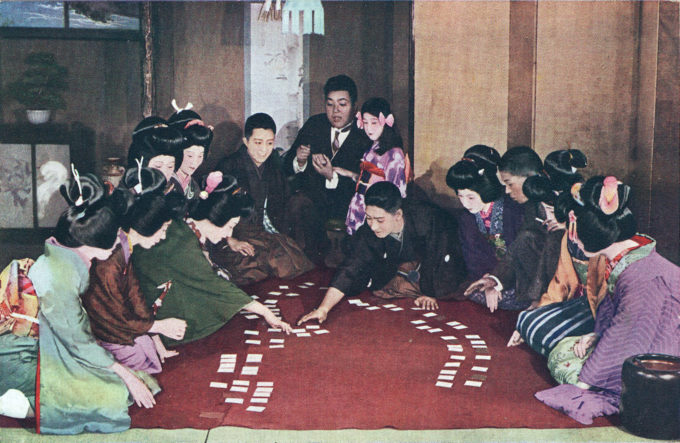
A game of Uta-garuta, c. 1930, a popular pastime at machiya [tea house]. The game is played by the general public mostly around the New Year holiday, and consists of a two sets each of 100 cards, with a waka poem written on each. A deck of torifuda (“grabbing cards”) is mixed up and laid out on the floor. Players sit around the cards. The reader draws a yomifuda (“reading cards”) and starts reading it, and players race to take the corresponding torifuda as fast as possible. When all the cards are taken, the player with the most cards wins the game. There is even a competitive form of uta-garuta, called karuta, that is recognized as a kind of sport in Japan. The Japanese national championship tournament of competitive karuta is held every January at Omi Shrine in Ōtsu, Shiga Prefecture.
“In the game of Uta-garuta (‘poem cards’), there are two hundred cards. One hundred of these are decorated with portraits of poets and the first two lines of famous classic verses. [The standard collection of poems used is the Hyakunin Isshu, chosen by poet Fujiwara no Teika in the Heian period.] These are to be matched with the corresponding hundred on which the remaining lines of the poems are inscribed.
“Of the many ways of playing uta-garuta, chirashi, ‘spread out’, is the most exciting. The cards bearing the last part of the poems are laid face up on the floor. Those inscribed with the first lines are held by the ‘reader’, who reads them aloud one by one. The other players strive to pick up the corresponding card and he who at the last holds the most in declared winner.”
– “The Japanese New Year’s Festival, Games and Pastimes”, by Helen Gunsaulus, Field Museum of Natural History (Chicago), 1923

